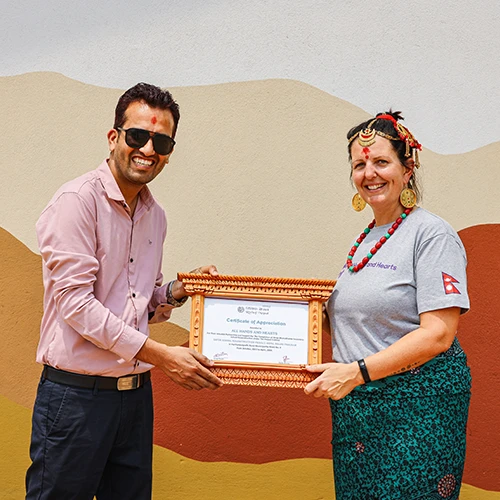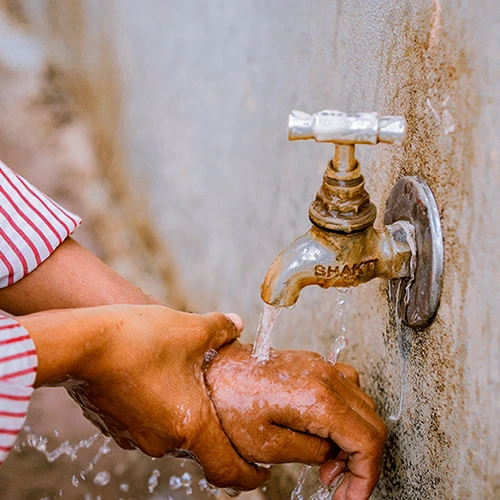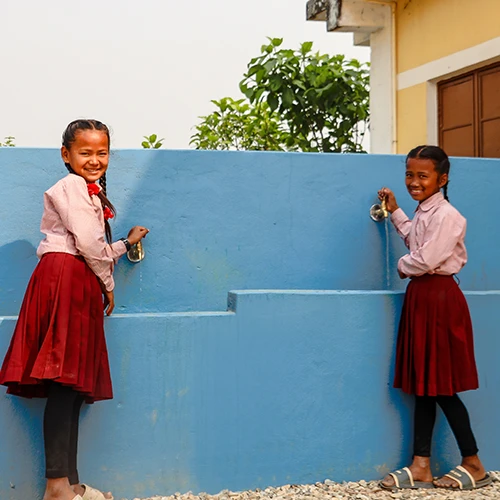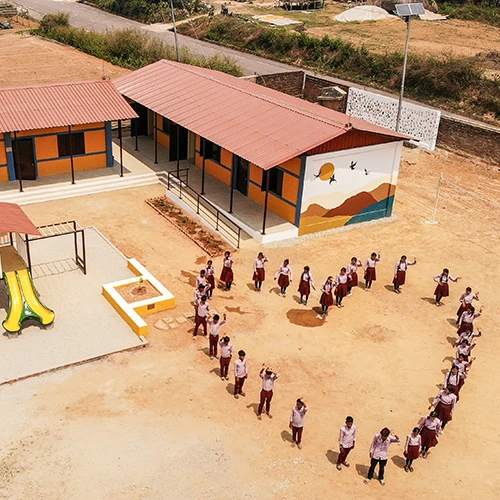Nepal Earthquake Relief
April 2015 – April 2025
Last Updated: August 2024
All Hands and Hearts’ (AHAH) earthquake relief work in Nepal began in 2015 after two devastating earthquakes struck the country. AHAH was on the ground assisting affected regions just days after the first earthquake hit. Since then, we have supported rural communities’ long-term educational needs across Nepal, impacting 29 schools and one community health center. This December, AHAH is excited to launch a new program in the Bagmati Rural Municipality, focusing on reconstructing our 30th school impacted and providing training sessions with the community.
Find the details about volunteering on AHAH’s school rebuild program here.
Our Work
AHAH will begin its newest program in Nepal in December 2024, addressing the unsafe learning conditions faced by students and staff at Shree Bandevi Basic School for almost a decade since the 2015 earthquakes. Over four months, the team will construct a new disaster-resilient school building with three classrooms using Compressed Stabilized Earth Brick (CSEB) technology. With our local partner Relief Nepal, we will also help conduct Disaster Risk Reduction trainings to encourage disaster preparedness in the community, as well as Child Protection and Water, Sanitation and Hygiene (WASH) trainings with the school community. We are excited to continue a new phase of our Female Mason Training Program, empowering local women by training and employing them in masonry to help build the school.
Disaster Profile
On April 25, 2015, a 7.8-magnitude earthquake hit Nepal near the capital city of Kathmandu; the worst in over 80 years. The earthquake caused widespread destruction of homes and infrastructure, claiming the lives of over 9,000 people and injuring a further 23,000. More than 8,000 schools were damaged or completely destroyed. On May 12, 2015, a second 7.3 earthquake struck the country, causing further devastation and loss of lives.
Constructing With Sustainability
AHAH is committed to using environmentally conscious and durable building practices wherever possible when rebuilding after disasters. Our latest school construction projects in Nepal utilize Compressed Stabilized Earth Brick (CSEB) technology, an approach that benefits the environment while providing durable, disaster-resilient infrastructure. CSEB uses a combination of locally-sourced soil and sand, mixed with a small amount of cement, to create bricks for infrastructure that are environmentally responsible, cost-effective and resilient.
CSEB reduces transportation costs, energy and CO2 emissions compared to traditional bricks due to their use of local materials. The bricks offer excellent thermal efficiency, reducing the need for artificial heating or cooling. Additionally, they are disaster-resilient, with metal rebar reinforcement enhancing their ability to absorb shocks, making buildings more flexible and durable than other methods.
Female Mason Training: Livelihoods, Gender Equality and Disaster Risk Reduction
All Hands and Hearts (AHAH) piloted the Female Mason Training Program in 2017, with the goal of training Nepali women in earthquake-resilient construction skills as a means of improving their economic situation.
The program has since provided social and economic empowerment while playing an important role in rebuilding a more resilient Nepal. Professional Nepali masons are in charge of teaching disaster-resilient building methods to the women, and trainees work in rural communities to rebuild primary and secondary schools or clinics. Our in-country partner assists graduates in obtaining mason certification, paving the way for them to secure fairly paid employment in the future. Through their subsequent jobs, program graduates then become agents for disseminating disaster-resilient construction methods in the region.
Sita, a program trainee, told us that since working with AHAH, she feels more financially secure and organized in her life. The Female Mason Training Program offered the opportunity to gain skills and access to education in a realm usually reserved for men. After the devastating impact of the 2015 earthquakes in her country, Sita recognized the significance of teamwork and the idea of “many hands making light work”. Additionally, Sita noted the benefits earned from women partaking in work traditionally done by men – when women and men work alongside each other “even the most difficult work becomes manageable”.
Listen to Sita’s story below.
Program History
Response Projects
Kathmandu, Nuwakot and Sindhupalchok, April 2015
72 hours after the first earthquake struck in April 2015, we were on the ground assisting affected communities. We launched two response programs, one in Kathmandu and the other in Sindhupalchok. Across both projects, a total of 104 debris sites were cleared and 13 damaged homes were safely brought down. We built 50 transitional homes in Melamchi (Sindhupalchowk), 15 transitional homes in Kagati (Nuwakot) and 35 transitional homes in Hulchowk (Kathmandu) addressing the short-term needs of disaster affected households. 12 community shelters were built to provide safe structures for communities to come together and 21 disaster-resilient homes were rebuilt. In response to the devastation of many schools in the area, 23 temporary learning centers were built and repaired in order to restart educational activities.
Happy Hearts Fund School Rebuilds
Prior to the merger of Happy Hearts Funds, USA (HHF) to All Hands and Hearts, HHF rebuilt four schools in Nepal in the Nuwakot District: Shree Mahendra Higher Secondary School, Shree Birendra Secondary School, Shree Niranjana Higher Secondary School and Shree Mahendra Secondary School. Across the four school rebuilds, 47 classrooms were constructed and this work impacted a total of 1,536 students.
















